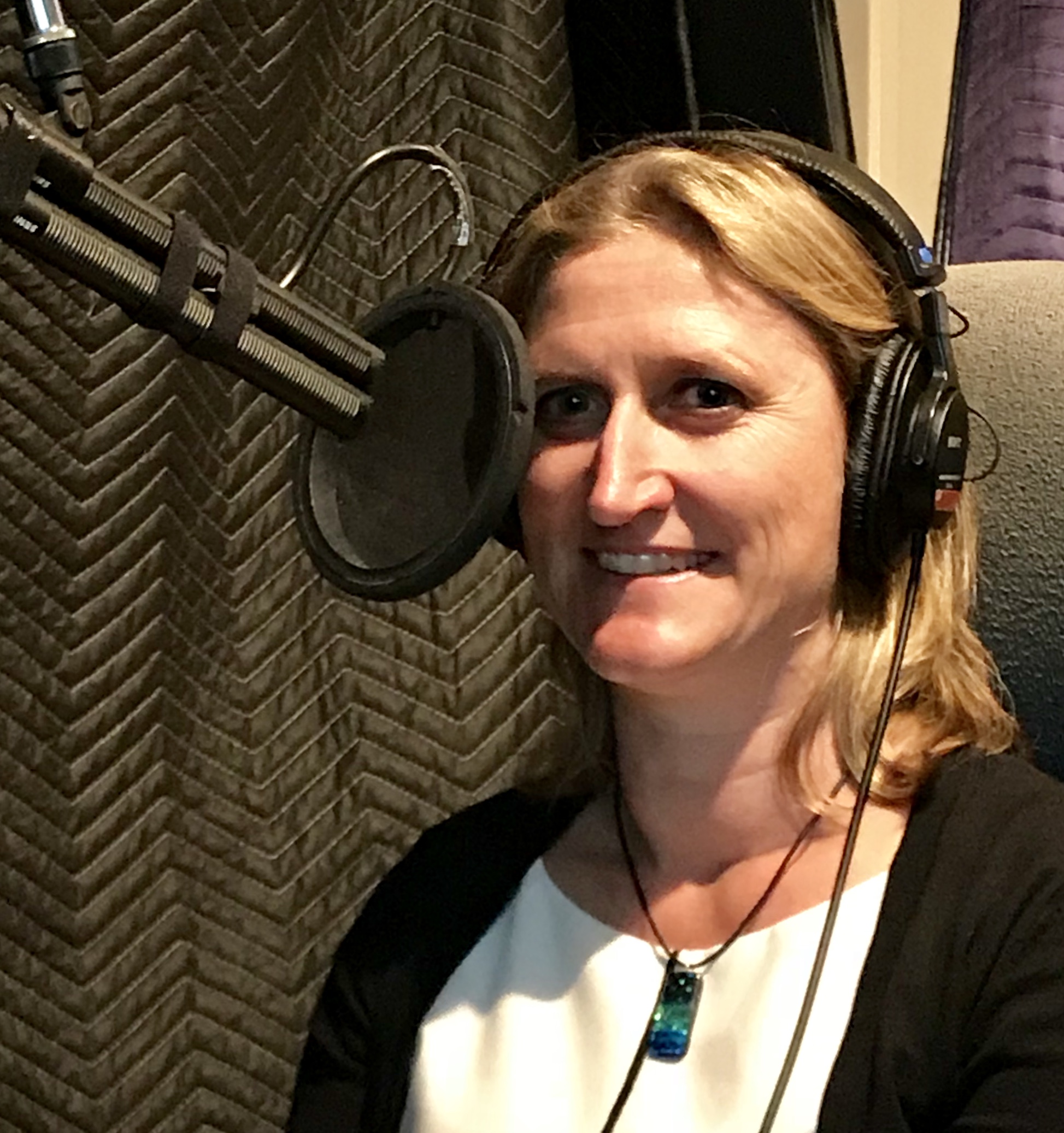During the spring of 2018 particle physicists and astrophysicists gathered at KITP to participate in two complementary programs, one in the field of astrophysics and the other in the field of high energy physics. Both programs were aimed at shedding light on a puzzle that has excited a whole new generation of researchers. Over 80 years ago scientists studying stars within galaxies and galaxies within clusters realized that the motion of these objects could not be explained by the large amount of visible matter and that a large amount of invisible dark matter must be present. Today, with more sensitive instruments, we have established that 84% of the matter in the universe is composed of dark matter – an invisible particle that is a key to extending the Standard Model of Particle Physics and also key to understanding how galaxies form in the universe.
 Professor Jodi Cooley records her segment for Public Radio International’s Science Friday. Photo by Lisa Stewart.
Professor Jodi Cooley records her segment for Public Radio International’s Science Friday. Photo by Lisa Stewart.
In the last two decades, studies of the relic Cosmic Microwave Background radiation and galaxy clustering have led to a remarkably strong and testable paradigm where the dark matter is a weakly interacting elementary particle that emerged from the early Universe. This scenario, called “Lambda-Cold-Dark- Matter” (LCDM) has developed into a fully mature theory, where detailed predictions can be tested by experiments. The predictions for clustering on small scales in the universe made by LCDM have stimulated strong interest from astronomers, astrophysicists and particle physicists. The revealed challenges include the observations of faint galaxies, the presence (and in some cases absence) of density cusps in centers of the dark matter halos surrounding certain galaxies and the surprisingly low amount of dark matter in some nearby dwarf galaxies. There were plenty of debates during the KITP programs discussing the merits, severity and possible solutions to these issues.
Although resolving the small-scale structure challenges is important for LCDM, it is equally important to discover what dark matter is. For several decades experimentalists have been trying to detect the interactions of dark matter in our own galaxy with detectors on Earth or create dark matter particles by colliding particles together in an accelerator such as the Large Hadron Collider at CERN. Dark matter is very elusive, and up to this point, we have not seen any strong evidence of dark matter interacting or being created in any of these detectors. This ignited strong interest in expanding the types of particles and interactions we might consider in our searches and in turn, it also means examining the technologies we need to use or develop in order to search for these new types of dark matter.
One of the most anticipated events to occur during these two programs was the announcement of new results from one year of data taking from the XENON1T dark matter detector. At KITP, program coordinator Laura Baudis of the Physik Institut of the University of Zurich, who is also a leader in the XENON1T experiment, presented the exclusion of new dark matter parameter space at a special seminar. The additional constraints provided by the XENON1T experiment further fueled the excitement to consider new dark types of dark matter and this excitement extended beyond the walls of KITP. On June 8, 2018 KITP program participant Flip Tanedo and I had a chance to discuss some of the new types of dark matter that theorists and experimentalists are exploring on Science Friday with host Ira Flatow and Gizmodo science writer Ryan Mandelbaum. It was a great way to wrap-up an exciting visit to KITP.
- Professor Jodi Cooley, Southern Methodist University
KITP Newsletter, Fall 2018
Listen to the Science Friday segment recording at: https://www.sciencefriday.com/segments/dark-matter-eludes-particle-physicists/
